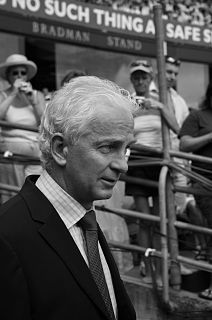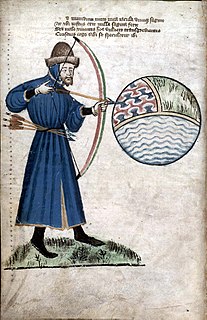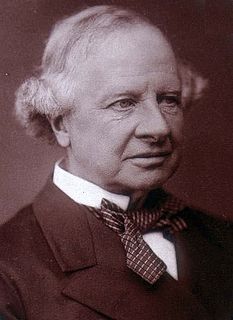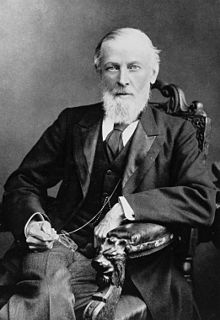
Gower or the Gower Peninsula is in the southwest of Wales. The peninsula projects westwards into the Bristol Channel and is the most westerly part of the historic county of Glamorgan. In 1956, the majority of the Gower became the first area in the United Kingdom to be designated an Area of Outstanding Natural Beauty.

David Ivon Gower is an English cricket commentator and former cricketer who was captain of the England cricket team during the 1980s. Described as one of the most stylish left-handed batsmen of his era, Gower played 117 Test matches and 114 One Day Internationals (ODI) scoring 8,231 and 3170 runs, respectively. He was one of the most capped and high scoring players for England during his period.

John Gower was an English poet, a contemporary of William Langland and the Pearl Poet, and a personal friend of Geoffrey Chaucer. He is remembered primarily for three major works, the Mirour de l'Omme, Vox Clamantis, and Confessio Amantis, three long poems written in French, Latin, and English respectively, which are united by common moral and political themes.

Granville George Leveson-Gower, 2nd Earl Granville,, styled Lord Leveson until 1846, was a British Liberal statesman from the Leveson-Gower family.

Sir William Timothy Gowers, is a British mathematician. He is Professeur titulaire of the Combinatorics chair at the Collège de France, and Director of Research at the University of Cambridge and Fellow of Trinity College, Cambridge. In 1998, he received the Fields Medal for research connecting the fields of functional analysis and combinatorics.

Duke of Sutherland is a title in the Peerage of the United Kingdom which was created by William IV in 1833 for George Leveson-Gower, 2nd Marquess of Stafford. A series of marriages to heiresses by members of the Leveson-Gower family made the Dukes of Sutherland one of the richest landowning families in the United Kingdom. The title remained in the Leveson-Gower family until the death of the 5th Duke of Sutherland in 1963, when it passed to the 5th Earl of Ellesmere from the Egerton family.

University College School, generally known as UCS, is an independent day school in Frognal, northwest London, England. The school was founded in 1830 by University College London and inherited many of that institution's progressive and secular views.

Sir William Richard Gowers was a British neurologist, described by Macdonald Critchley in 1949 as "probably the greatest clinical neurologist of all time". He practised at the National Hospital for the Paralysed and Epileptics, Queen Square, London from 1870–1910, ran a consultancy from his home in Queen Anne Street, W1, and lectured at University College Hospital. He published extensively, but is probably best remembered for his two-volume Manual of Diseases of the Nervous System (1886, 1888), affectionately referred to at Queen Square as the Bible of Neurology.

Harriet Elizabeth Georgiana Sutherland-Leveson-Gower,Duchess of Sutherland, styled The Honourable Harriet Howard before her marriage, was Mistress of the Robes under several Whig administrations: 1837–1841, 1846–1852, 1853–1858, and 1859–1861; and a great friend of Queen Victoria. She was an important figure in London's high society, and used her social position to undertake various philanthropic undertakings including the protest of the English ladies against American slavery.

Rhossili is both a small village and a community on the southwestern tip of the Gower Peninsula in Wales. It is within the first Area of Outstanding Natural Beauty in the United Kingdom. The village has a community council and is part of the Gower parliamentary constituency, and the Gower electoral ward. At the 2011 census, the population was 278. The community includes the hamlet of Pitton.

Craig Gower is an Italian-Australian former professional rugby league and rugby union footballer who played in the 1990s, 2000s and 2010s. He is a dual-code rugby international, having played rugby league for Australia and rugby union for Italy. A New South Wales State of Origin and Australian Kangaroos representative halfback or hooker, he played in the National Rugby League for Sydney club the Penrith Panthers. Gower then switched rugby union, playing for French Top 14 side Bayonne, and through grandparentage represented Italy. He returned to rugby league with the London Broncos in the Super League and then finished his playing career with one more National Rugby League season at the Newcastle Knights.

Admiral Sir Erasmus Gower was a Welsh naval officer and colonial governor.

Garjainia is an extinct genus of erythrosuchid archosauriform reptile from the Olenekian of Russia and South Africa. It was approximately 1.50–2 m long. It contained two species, Garjainia prima from the Yarengian/Yarkenskian Supergorizont of Russia, and Garjainia madiba from the Burgersdorp Formation of South Africa. "Vjuskovia triplicostata", a name assigned to some erythrosuchid fossils from Russia, has been synonymized with Garjainia prima.

Batrachotomus is a genus of prehistoric archosaur. Fossils of this animal have been found in southern Germany and dated from the Ladinian stage of the Middle Triassic period, around 242 to 237 million years ago. Batrachotomus was described by palaeontologist David J. Gower 22 years after its discovery.
Fenhosuchus is an extinct genus of archosauriform. The holotype, IVPP V 2697, and referred materials have been found in the Hsishihwa locality at Wuhsiang, China, from the Upper Ermaying Formation. The locality dates back to the Anisian stage of the Middle Triassic. The genus was named after the Fen River in Shanxi Province from which specimens were found. It may prove to be a chimera being composed of material from several different animals. Some material were believed to represent a rauisuchid. The calcaneum of Fenhosuchus seems to belong to an erythrosuchid or other basal archosauriform. Much of the material of the tarsal bones seem to be similar to those of the genus Shansisuchus. According to Nesbitt (2009) the assessment of Gower (2000) was correct, the holotype is a mix of Shansisuchus remains and a possible fragment from a paracrocodylomorph or a dinosauriform. Thus, Fenhosuchus cannot be considered a rauisuchian.

The Gower Ornithological Society is a society for professional and amateur birdwatchers covering the geographical areas of south Wales comprising Gower, Swansea, Neath and Port Talbot.
Cyril Gwynn (1897–1988) was a British poet, from Gower, in the City and County of Swansea. He was known as the Bard of Gower, and became a household name in Gower before leaving for Australia. His poetry was spoken rather than written, and was in the English language, using the Gower dialect.
The Gower dialect refers to the older vocabulary or slang of the Gower Peninsula on the south Wales coast. It was Normanised/Anglicised relatively early after the Norman conquest of England. Relatively cut off from the Welsh hinterland, but with coastal links across south Wales and the West Country, the region developed their distinct English dialect which endured to within living memory.

Long Hole, also spelled Longhole, is a limestone cave on the south coast of the Gower Peninsula between Paviland and Port Eynon. It is relatively small, measuring about 15 m (49 ft) deep after several excavations. It was first excavated in 1861 by Colonel E. R. Wood. Wood found evidence of a lithic assemblage and faunal remains. The faunal remains included cave hyena, reindeer, Woolly rhinoceros, mammoth, straight-tusked elephant and wild horse.















